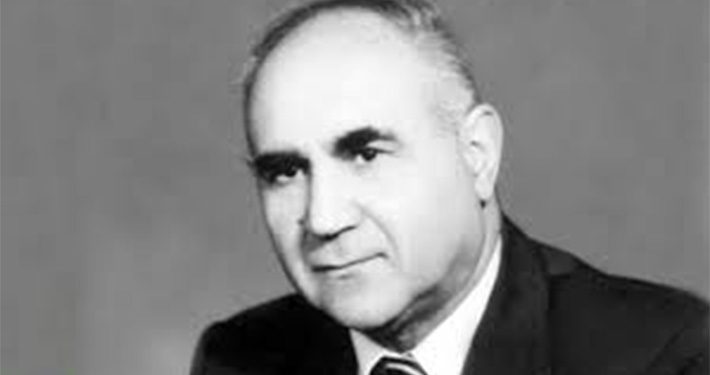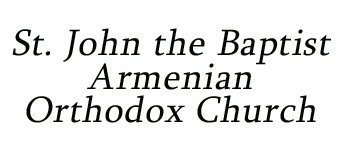BIRTH OF EDWARD JERBASHIAN
September 24, 1923

Eduard Jerbashian
Eduard Jerbashian was one of the authoritative names of Soviet Armenian literary scholarship and criticism in the 1960s-1980s.
He was born on September 24, 1923, in Yerevan. He graduated from Shota Rustaveli high school in Yerevan in 1941. He was mobilized and, after completing studies at the officers’ school, he participated in World War II in 1943-1944, where he was wounded and lost a leg. After demobilization, he attended and graduated the section of Armenian language and literature of the Faculty of Philology of Yerevan State University (1945-1950).
He taught for the next half century at his alma mater, first at the chair of theory of Armenian literature (1950-1972) and then as head of the chair of literary theory and aesthetics, which he founded (1972-1985) and head of the chair of literary theory and foreign literature (1985-1999). He earned the title of professor in 1967.
In 1954, Jerbashian had defended his first doctoral dissertation about the genre of the poem in Soviet Armenian literature, followed in 1965 by a second doctoral dissertation on Hovhannes Toumanian’s poems. He headed the department of literary theory at the Manuk Abeghian Institute of Literature of the Academy of Sciences (1966-1970). He became corresponding member of the Academy (1974) and full member (1982). Between 1977 and 1999 he was the director of the Institute of Literature.
For brief periods he was deputy editor of Kragan (Grakan) Tert, the weekly of the Writers Union of Armenia (1953-1954), and Sovetakan Grakanutiun, its monthly (1961-1962). He was also founding editor of the humanities journal Banber Yerevani hamalsarani (1967-1977), published by Yerevan State Univeristy.
Edvard Jerbashian authored more than twenty monographies and hundreds of articles. He also undertook the edition of the works of many classics of Armenian literature. He earned the title of Emeritus Science Worker of Armenia in 1970.
He passed away in Yerevan on August 10, 1999.
Jim Torosian was the chief architect of Yerevan in the 1970s and one of the creators of its contemporary image.
He was born in the capital of Armenia on April 18, 1926. He graduated from the Yerevan Polytechnic Institute in 1949 and continued his higher education in Moscow, graduating from the USSR Academy of Architecture in 1954. In the same year, he returned to Yerevan and started teaching at the Faculty of Architecture of the Polytechnic Institute (now part of the National University of Architecture and Construction of Armenia), where he earned the title of professor in 1979. He became a member of the Union of Architects of Armenia in 1957 and head of the workshop of architecture at the Yerevan Planning Institute the following year. He was the deputy chairman of the Union of Architects (1962-1964).
He built the monument to the Armenian alphabet in Oshakan, near the tomb of St. Mesrop Mashtots (1962). Between the 1960s and the 1990s, many other monuments followed (Mikayel Nalbandian, Paruyr Sevak, Avetik Isahakian, Alexander Miasnikian, Yeghishe Charents, Victor Hambardzumian) in collaboration with different sculptors, as well as the tombstones of Paruyr Sevak and Martiros Sarian, and the funerary statue of William Saroyan. The Isahakian monument in Gumri won the State Prize of the Soviet Union in 1977 and the tombstone of Martiros Sarian at the Komitas Pantheon earned the gold medal of the USSR Art Academy (1981).
Between 1971 and 1981, Jim Torosian was the chief architect of Yerevan. He revived a forgotten project by Alexander Tamanian to connect the northern and central parts of the city with the vast green area of waterfalls and gardens and incorporated new ideas, such as an exterior stairway, escalators, and an intricate network of halls, courtyards, and outdoor gardens. The construction of the Cascade was launched in the 1980s but abandoned after the earthquake of 1988 and the breakup of the Soviet Union. In 2002 the late Armenian-American benefactor Gerard Cafesjian initiated the revitalization of the construction working with the city and the country government, making the area what it is today.
Torosian was also the author of the Republic Square (formerly Lenin Square) subway station with its complex of upper ground and underground structures (1981), which won the State Prize of Armenia in 1983. Among many other buildings, he was the architect of the Cardiology Research Institute (1964-1969), the Museum of Contemporary Art (1982-1985), the former building of Yerevan City Hall and the current building with the City History Museum (2004), the central square of Spitak (1998-2005), the open-air altar (2001) and other constructions in Holy Echmiadzin.
During his long career, he was honored with many titles and medals in Armenia and abroad. He was an honorary citizen of Yerevan and Spitak. He passed away on January 5, 2014, and was buried in the Komitas Pantheon.


